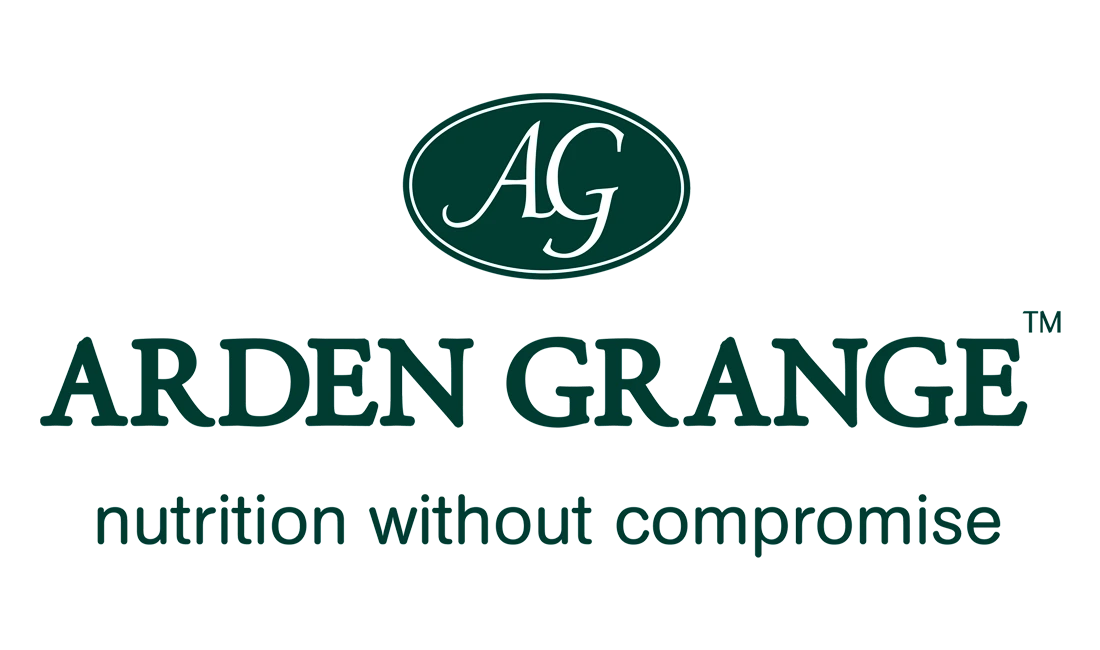Environmental allergies
Atopy describes an adverse immune reaction to one or more environmental allergen/s. These usually trigger a response when inhaled, but contact allergies can affect pets too. Atopic animals produce more immunoglobulin E (IgE) antibodies. The normal role of these antibodies is to protect the body against parasitic organisms, but they also produce allergic reactions.
Atopy can be treated with immunotherapy, and symptoms managed using anti-inflammatory and immunosuppressant drugs, but it can still be a difficult condition to manage since drug therapy is not always fail-safe, and many allergens are impossible to completely avoid.
High sensitisation rates to the Tyrophagus, Acarus, and Lepidoglyphus species of storage mites have been reported in atopic animals, and studies have indicated that dry pet food can be a suitable substrate for storage mite reproduction. Environmental conditions may influence food contamination and mite development, so careful storage is important. Using two or even three airtight containers for each sack of food will help to retain its freshness. A small container kept on the kitchen counter for daily use means that the rest of the food kept separately is not exposed to air, moisture and environmental contaminants every time the animal is fed. If financially viable; smaller sized bags of food are a good idea. Dry pet food does not arrive with storage mites, but they can take up residence when the pack is opened.
Please see our fact sheet for more information about the safe storage of dry dog and cat food.
If using dry food, choose a high quality brand such as Arden Grange that doesn’t include high a high volume of cereal, and has well defined kibble which isn’t broken, overly dry or dusty. Commercial dry food can be vacuum packed or frozen (defrost before use) if a dog or cat has very severe allergies to storage mites. Dry food is best soaked or sprayed with warm water before serving to try and limit any dust which may be otherwise inhaled. An alternative would be to use commercial wet food such as the Arden Grange Partners canned food range (for dogs), or a carefully balanced home-prepared or raw menu.
House dust mites inhabit carpets, bedding and soft furnishings. “Hypoallergenic” bedding is available, but regular washing is also a good way to minimise house dust mites. Temperatures of 60+ degrees C will kill them. It’s probably best not to encourage an atopic animal into or onto your own bed as dust mites are particularly prevalent in this area; but if your pet is allowed, you’ll need to wash your own bedding more frequently. Launder your curtains and soft furnishings regularly, and make sure you use gentle, un-fragranced detergents.
If possible, remove carpets and vacuum hard floors with a high-filtration vacuum cleaner with the capacity to retain a high proportion of the smallest particles. When the vacuum cleaner needs emptying, do this outdoors and make sure your pet is not in the vicinity. If carpets cannot be removed, a high-temperature steam-cleaner is an effective way to kill dust mites. Spray preparations are also an option, but care should be taken if pets or people in the household suffer from a respiratory condition. Damp carpet over concrete floors generates a humid environment which is very favourable to dust mites, so if you’re shampooing your carpets, make sure they are dried thoroughly.
Use a damp duster when cleaning to minimise the amount of particles being wafted up into the air. Take care when selecting cleaning products, as some sensitive pets can be very reactive to certain chemicals and fragrances. Scented candles and plug-in air fresheners can be especially provocative. Many pets love soft toys, but for the atopic animal, hard and easily washable toys are a safer option. If your cat or dog is passionate about soft toys, wash them regularly at 60+ degrees C. If they won’t survive a high laundry temperature, then they can be sealed in a plastic bag in the freezer for a minimum of twelve hours once a month and then washed at a lower temperature.
If you know or suspect that there is mould in your home, it is best to consult a professional for remedial advice. Mould spores can make pets and people very ill. To prevent mould occurring, wipe down condensation from windows and window sills, avoid drying clothes on radiators and ensure that all rooms are adequately ventilated. A humid atmosphere promotes mould growth and increases the dust mite population; so a dehumidifier may be a good investment - keep indoor humidity at under 50%, but at the opposite extreme, you do not want the atmosphere to be too dry either.
Limiting exposure to pollen is difficult because dogs need to be walked outdoors, and many cats enjoy being outside. Intradermal skin testing is expensive, but it can be an extremely useful diagnostic tool since particular types of pollen that are problematic to the individual can be identified. If you know which trees and grasses are annoying your dog’s immune system, it can sometimes be possible to alter walking routes to avoid these particular plants. Try to avoid walking at very humid times of the day if possible too. Protective boots may be an idea if your dog’s feet become irritated when walking in particular areas. Nibbling at the feet can be symptomatic of atopy, so your dog may have sore feet even if he/she is not walking on something that’s directly affecting him/her such as chemicals used to spray crops or insecticides used on grass. Salt and grit on the roads in winter can exacerbate this, so it’s important to be careful at all times of the year.
Reactions to insect bites and stings can be very severe if your pet is allergic to the enzymes released by the insect. External parasite control is therefore important for animals who are known or suspected to be allergic to flea or tick saliva, but be sure to use safe, species-appropriate products and do not exceed the recommended dose. Dog products should never be used on cats and vice versa. Other insects such as ants and midges can also be a problem for some sensitive animals. If your pet has had a past anaphylactic reaction as a result of a bee sting for example, your vet may provide you with a syringe containing the correct dose of epinephrine for your pet’s body weight in case of a future reaction.
Just like people, animals can be allergic to the protein in dander (skin particles). Cat dander can be a particular problem for dogs. All cats and dogs in the household should be regularly groomed to remove dead skin cells and stimulate sebum production. Make sure grooming debris is quickly tidied up and disposed of. Wash brushes, combs and any other grooming tools regularly, and use separate equipment for your cat and dog. Dogs may benefit from regular, but not too frequent bathing with a mild emollient shampoo. Good nutrition designed to feed the skin and coat from the inside can be very helpful, so choose your pet’s diet with care.
Atopy is much more prevalent than food allergies, but the diet of an atopic pet requires consideration for several reasons:-
a) When an animal is sensitive to one or more allergens in the environment, this may leave the immune system vulnerable. It is therefore not uncommon for an atopic pet to develop other types of allergy; such as to one or more dietary protein/s. If a food allergy is suspected or diagnosed, then a trial using a diet that provides both a novel protein and carbohydrate source may be beneficial; i.e. ones which the animal has not eaten before, since food allergies usually arise after a reasonable period of exposure to the provocative ingredient.
b) Good nutrition can support and strengthen the immune system. This can be especially beneficial to an animal with a threshold based allergy because even if the allergen cannot be completely eliminated, the reaction to it may be less severe if the threshold at which a reaction occurs can be raised by increasing immune strength.
Arden Grange produce a range of hypoallergenic diets that all exclude the most common dietary allergens, which are wheat, beef, soya and dairy products. Furthermore, every product contains prebiotics, nucleotides, natural antioxidants and krill, which is an excellent source of the essential omega-3 fatty acids EPA and DHA, which may all benefit your pet’s immune system.
| Animals do a lot of sniffing, so it’s no surprise that certain things can get up their noses and cause them problems. They are also smaller than adult humans, so what might be mildly bothersome to us such as a high pollen count on a summer’s day could be a lot more irritating to an atopic pet. As mentioned above, supporting the immune system can be very beneficial. EPA and DHA work in the skin to help reduce the amount and effects of histamine and other chemicals that are produced in response to allergens. Allergic animals may also benefit from a probiotic supplement. Although we include prebiotics in our food, the high cooking temperatures and relatively long shelf-life of commercial complete pet food are not conducive to the survival of probiotics. A commercial supplement such as Lintbell’s YuDIGEST may be beneficial to the atopic pet because a large proportion of the immune cells reside in the gut. Minimising exposure to allergens can be highly beneficial since the immune system can then focus more on its important protective role. As a responsible and ethical company, Arden Grange fully appreciates the caution that must be taken when discussing the potential benefits of nutritional supplements. It is against the law to make medical claims. Whilst our ingredients are safe and natural, and may be beneficial to some of the cats and dogs fed on Arden Grange, we must highlight that their inclusion is not a substitute for veterinary intervention in the case of a sick animal. |


 Puppy
Puppy
 Adult
Adult
 Senior
Senior
 Sensitive
Sensitive
 Treats
Treats Kitten
Kitten
 Adult
Adult
 Senior
Senior
 Trusted British Brand
Trusted British Brand

